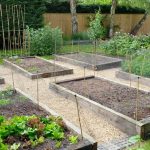Apartment living should not limit one’s ability to enjoy homegrown vegetables. In fact, with the right knowledge and resources, apartment dwellers can successfully cultivate their own greens within the confines of their living space. For those seeking to embark on this rewarding journey, understanding the best vegetables for apartment gardens is crucial. With limited space and potential restrictions in mind, it is important to select the right plants that will thrive in such environments.
Growing vegetables in apartment gardens offer numerous benefits beyond just a fresh supply of produce. Not only does it provide a sense of satisfaction and connection to nature, but it also allows individuals to save money on grocery bills while promoting a healthier lifestyle. By incorporating vegetable gardening into apartment living, residents can enjoy a sustainable and eco-friendly way of sourcing their food.
When it comes to choosing the right vegetables for apartment gardens, certain factors such as sunlight exposure, space constraints, and climate conditions must be considered. Opting for compact varieties or those that are suitable for containers can maximize harvest yields in limited spaces.
From herbs like basil and parsley to vegetables like tomatoes and peppers, there is a wide range of options that are well-suited for apartment gardening. By selecting the best vegetables that align with your living situation, you can set yourself up for a successful and bountiful harvest year-round.
Benefits of Growing Vegetables in Apartment Gardens
Growing vegetables in apartment gardens not only adds a touch of greenery to urban living but also provides a myriad of benefits for apartment dwellers. One significant advantage is the ability to have access to fresh, homegrown produce right at your fingertips. By growing your own vegetables, you can ensure that they are free from harmful pesticides and chemicals, promoting a healthier lifestyle.
Improved Sustainability
Another benefit of growing vegetables in apartment gardens is the opportunity to contribute to sustainability efforts. By reducing the need for store-bought produce that may have been transported long distances, apartment gardeners can lower their carbon footprint and help minimize environmental impact. Additionally, practicing sustainable gardening techniques such as composting can further enhance the eco-friendly aspect of apartment vegetable gardening.
Cost-Effective and Convenient
Apartment gardening also offers a cost-effective way to enjoy fresh produce without breaking the bank. With rising food prices, having a small vegetable garden in your apartment can help save money on grocery bills.
Furthermore, having your own mini-garden at home eliminates the need for frequent trips to the store, making it a convenient option for those with busy lifestyles. With careful planning and selection of the best vegetables for apartment gardens, anyone can reap the benefits of cultivating their own fresh produce right at home.
Choosing the Right Vegetables for Apartment Gardens
When it comes to choosing the right vegetables for apartment gardens, there are a few key factors to consider. First and foremost, space is often limited in apartment settings, so selecting vegetables that thrive in small containers or vertical spaces is essential. Additionally, considering the amount of sunlight your apartment receives is crucial when determining which vegetables will grow successfully.
Types of Vegetables Ideal for Apartment Gardens
Some of the best vegetables for apartment gardens include cherry tomatoes, peppers, lettuce, herbs, and microgreens. These varieties can be grown in small pots or hanging planters, making them perfect for those with limited outdoor space. Cherry tomatoes are particularly well-suited for container gardening, as they require minimal maintenance and produce an abundant harvest throughout the growing season.
Considerations for Growing Vegetables Indoors
If your apartment receives limited sunlight or if you don’t have access to an outdoor space, you can still grow certain vegetables indoors. Leafy greens like spinach and kale, as well as herbs such as basil and parsley, can thrive in indoor environments with adequate light. Utilizing grow lights can also help supplement natural light and promote healthy growth for your indoor vegetable garden.
Maximizing Space With Vertical Planting
For apartment dwellers with even less space to work with, vertical planting can be a game-changer. Vining plants like cucumbers and beans can be trained to grow vertically using trellises or stakes, allowing you to make the most of every inch of available space.
Additionally, hanging planters or wall-mounted containers provide additional opportunities to grow a variety of vegetables without taking up valuable floor space. By getting creative with your planting techniques, you can enjoy a bountiful harvest of fresh produce right in your own apartment.
Best Vegetables for Limited Space
When it comes to apartment gardening, space is often a limiting factor. However, there are several vegetables that thrive in small spaces and can be successfully grown in containers or small pots. The key is to choose compact varieties or plants that don’t require a lot of room to spread out. Some of the best vegetables for apartment gardens include cherry tomatoes, salad greens, herbs, and peppers.
Cherry tomatoes are perfect for apartment gardens because they can be grown in hanging baskets or small containers. These delicious little fruits provide a continuous harvest throughout the summer and only need a sunny spot to thrive.
Salad greens like lettuce, spinach, and arugula are also great choices for limited space as they can be grown close together in shallow containers. Not only do these leafy greens provide a fresh and healthy addition to your meals, but they also grow quickly and can be continuously harvested by cutting off outer leaves.
Herbs such as basil, parsley, cilantro, and mint are essential for adding flavor to your dishes and they are ideal for apartment gardening. These fragrant plants can be grown in small pots on windowsills or balcony railings. Peppers, both sweet and hot varieties, are another excellent choice for compact spaces.
These plants can produce an abundant crop with just a little care and regular watering. With the right selection of vegetables suited for limited space, apartment dwellers can enjoy the satisfaction of growing their own food right at home.
Container Gardening
When it comes to choosing the best vegetables for apartment gardens, there are several factors to consider. Opt for vegetables that are well-suited for container gardening and do not require an extensive amount of space to grow. Some of the top choices include cherry tomatoes, lettuce, peppers, radishes, and herbs like basil and parsley. These vegetables not only flourish in containers but also provide a bountiful harvest that can enhance your culinary creations.
One key tip for successful container gardening is to select the right size pots or containers for your chosen vegetables. Make sure that each plant has ample room to grow its roots and receive adequate nutrients.
Additionally, be mindful of the sunlight requirements of your selected vegetables and place your containers in locations where they can receive sufficient sunlight throughout the day. With proper care and attention to detail, you can enjoy a flourishing vegetable garden right in your apartment’s cozy corner.
| Vegetable | Growing Conditions |
|---|---|
| Cherry Tomatoes | Full sun; requires regular watering |
| Lettuce | Partial shade; grows well in cooler temperatures |
| Peppers | Full sun; need roomy containers for optimal growth |
| Radieshes | Partial shade; quick-growing root vegetable |
Seasonal Planting Guide for Apartment Gardens
When it comes to successfully growing vegetables in apartment gardens, one key aspect to consider is following a seasonal planting guide. This can help ensure that your plants thrive and produce a bountiful harvest despite any limitations in space. By understanding the best times to plant specific vegetables based on the season, apartment dwellers can maximize their gardening efforts and enjoy a variety of fresh produce throughout the year.
During the spring months, apartment gardeners can focus on planting cool-season vegetables such as lettuce, spinach, radishes, and peas. These crops do well in cooler temperatures and can be harvested relatively quickly, making them ideal for smaller spaces.
As the weather warms up in summer, transitioning to warm-season vegetables like tomatoes, peppers, cucumbers, and beans is recommended. These plants require more sunlight and warmth to thrive, so be sure to place them in sunny spots or utilize grow lights if necessary.
In the fall, consider planting another round of cool-season crops like kale, carrots, beets, and broccoli. These vegetables can withstand colder temperatures and often taste even better after a light frost.
Additionally, incorporating herbs like basil, parsley, chives, and mint into your apartment garden can provide fresh flavors year-round. By following a seasonal planting guide tailored to apartment gardens, you can make the most of your limited space and enjoy a continuous harvest of the best vegetables for apartment gardens.
Essential Supplies and Tools for Apartment Vegetable Gardening
Growing vegetables in an apartment setting can be a rewarding experience, but it requires the right supplies and tools to ensure success. One of the most important items for apartment vegetable gardening is a suitable container or pot for your plants.
Make sure the container has proper drainage holes to prevent waterlogging and choose a size that accommodates the specific vegetable you want to grow. Additionally, having high-quality potting soil is essential for providing nutrients and support to your plants in a confined space.
In addition to containers and soil, having the right gardening tools can make caring for your apartment garden much easier. Some basic tools you may need include a trowel for planting and transplanting, a hand rake for clearing debris or loosening soil, and pruners for trimming and shaping your plants as they grow.
Depending on the size of your apartment garden, you may also find it useful to have a watering can or hose attachment for easy watering, especially during hot weather.
Another essential supply for apartment vegetable gardening is fertilizer or plant food to ensure that your plants are getting the necessary nutrients to thrive. Consider choosing an organic fertilizer option to promote healthy growth without harsh chemicals. Additionally, having pest control solutions on hand such as neem oil or insecticidal soap can help manage common pests that may affect your vegetable plants in a confined space.
| Essential Supplies | Tools |
|---|---|
| Suitable containers/pots | Trowel |
| Potting soil | Hand rake |
| Fertilizer/plant food | Pruners |
By having these essential supplies and tools on hand, apartment dwellers can set themselves up for successful vegetable gardening in limited spaces. With proper care and attention, even small apartments can become thriving gardens filled with fresh produce that you can enjoy right at home.
Troubleshooting Common Issues in Apartment Gardens
Growing vegetables in an apartment garden can be a rewarding experience, but it does come with its challenges. From limited sunlight to pest problems, apartment dwellers may encounter common issues while cultivating their own produce. However, with the right knowledge and strategies, these obstacles can be overcome to ensure a successful harvest.
To troubleshoot common issues in apartment gardens, consider the following tips:
- Lack of sunlight: If your apartment receives limited sunlight, opt for vegetables that thrive in partial shade or require minimal sunlight. Leafy greens like lettuce and spinach, as well as herbs like parsley and mint, are great options for low-light conditions.
- Pest infestation: To prevent pests from damaging your vegetable plants, practice regular inspection and maintenance. Utilize natural pest control methods such as companion planting or neem oil to deter unwanted insects without using harmful chemicals.
- Soil quality: Apartment gardeners often face challenges with poor soil quality or lack of space for traditional gardening beds. Consider using raised garden beds or container gardening to control the soil composition and drainage for optimal plant growth.
In addition to these troubleshooting tips, remember that consistent watering, proper drainage, and regular fertilization are key factors in maintaining a healthy apartment garden. By being proactive in addressing common issues and staying attentive to the needs of your plants, you can cultivate a bountiful harvest of the best vegetables for apartment gardens right in your own living space.
Conclusion
In conclusion, apartment dwellers can successfully grow a variety of vegetables in their limited space with the right knowledge and tools. By choosing the best vegetables for apartment gardens, such as tomatoes, peppers, and herbs like basil and mint, you can enjoy a bountiful harvest right at home. Container gardening offers a convenient solution for those with small spaces, allowing them to grow their own fresh produce without the need for a backyard garden.
One of the key benefits of growing vegetables in apartment gardens is the satisfaction of knowing exactly where your food comes from. Apartment dwellers have the opportunity to experience the joy of watching their plants grow and thrive, from seed to harvest. Not only does this provide a sense of accomplishment, but it also allows individuals to enjoy fresh, flavorful produce that they have nurtured themselves.
With the right seasonal planting guide and essential supplies and tools, apartment gardeners can overcome common issues and ensure successful growth of their vegetable plants. By following these tips and selecting the best vegetables for apartment gardens, anyone can create a thriving mini-garden right in their own living space. So roll up your sleeves, get your hands dirty, and start enjoying the fruits of your labor in your very own apartment garden today.
Frequently Asked Questions
What Is the Easiest Vegetable to Grow in an Apartment?
The easiest vegetable to grow in an apartment would be herbs like basil, parsley, or mint. These plants require minimal space, sunlight, and care, making them ideal for indoor gardening beginners.
Can You Have a Vegetable Garden in an Apartment?
Yes, it is possible to have a vegetable garden in an apartment. Vertical gardens, hanging planters, or compact containers can be used to grow vegetables like cherry tomatoes, peppers, lettuce, or even cucumbers indoors. With proper lighting and care, apartment dwellers can enjoy fresh produce at home.
What Are Good Apartment Food Plants?
Good apartment food plants include leafy greens such as spinach and kale, which thrive well in containers and do not require too much space. Microgreens like arugula or radishes are also popular choices for indoor gardening due to their quick growth and high nutritional content.
Additionally, dwarf varieties of fruits like strawberries or blueberries can be grown successfully in apartments with adequate sunlight.

If you’re looking to get into vegetable gardening, or are just looking for some tips on how to make your current garden better, then you’ve come to the right place! My name is Ethel and I have been gardening for years. In this blog, I’m going to share with you some of my best tips on how to create a successful vegetable garden.





